A language learning website is a platform that is available online providing resources as well as tools so that individuals learn new languages. A language learning website has exercises, lessons, and activities for users to practice listening, reading, and writing.
A language learning website has 4 main benefits.
- Flexibility and convenience as users are able to learn at their pace and do not feel the pressure of physical attendance as is the case with learning offline.
- Provides access to multiple resources, from traditional learning through mock conversations, to visual learning from flashcards and auditory inputs from podcasts.
- Interactive learning is possible through gamification, which makes the learning process entertaining instead of tedious.
- Feedback and progress tracking are provided so that users can improve their current performance while being motivated by their progress.
Geekflare team has compiled a list of the best language learning websites based on features like visual learning, linguistics, speech recognition, and language-based games.
- Mondly – Best for Gamifying Language Learning
- Duolingo – Best to Learn from Mobile
- Pimsleur – Best for Improving Speaking & Listening
- Babbel – Best for Conversation-Focused Lessons
- Busuu – Best to Learn from Native Speakers
- Rosetta Stone – Best for School and Individual
- Fluent in 3 Months – Best for Rapid Fluency Goals
- All Language Resources – Best to Find Language Learning Materials
- Mezzofanti Guild – Best to Learn Arabic and European Languages
- Learn with Oliver – Best to Learn Chinese and English
- Loecsen – Best for Interactive Lessons
- Show less
Mondly
Best for Gamifying Language Learning
Mondly is a language learning tool that focuses on improving language fluency through fun. This helps to remove performance pressure on users when they are learning a new language. It uses visual learning as its teaching method. The lessons use a similar game-like method where you progress by answering a question related to a language. The questions are related to translating sentences to your native language, learning to pronounce words, forming sentences, and more.
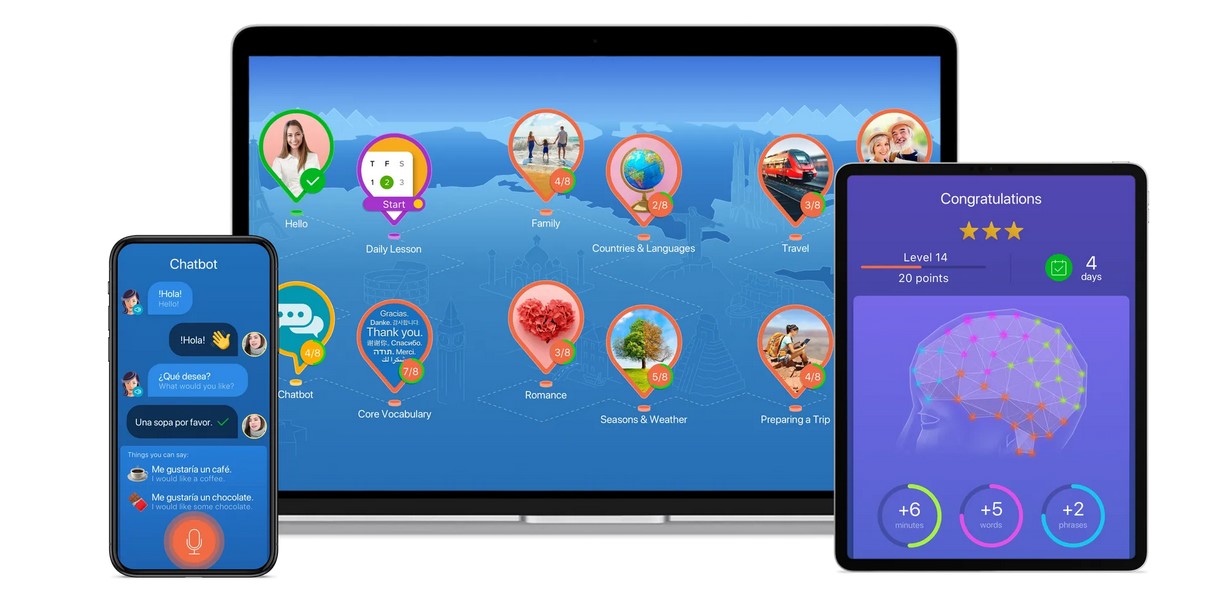
The best part about Mondly is its diverse curriculum that includes various learning methods. Users get to do weekly and monthly quizzes for better assessment of their learning.
Mondly is not a free platform and requires you to purchase its paid packages to continue learning. You can access some of its features in the trial version, but the feature set is minimal.
Mondly Pros
Is less expensive as compared to other language learning websites.
Focuses on vocabulary that users would use in real-life experiences.
A gamified learning experience.
Mondly Cons
Advanced language learning is not covered.
Speaking and grammar skills are not given much priority.
Mondly Pricing
Mondly offers the following pricing plans:
- Learn 1 language per month at $9.99.
- Learn 1 language for 12 months at $47.99 per year.
- Learn up to 41 languages with lifetime access for a $99.99 one-time payment.
Duolingo
Best to Learn from Mobile
Duolingo has an entertaining and interactive interface with gamification features that easily engage users. Reading blends in with listening exercises, and if the user cannot do the listening exercises, they can be postponed. Its leaderboards and map, along with daily quests, are another plus apart from accessibility.
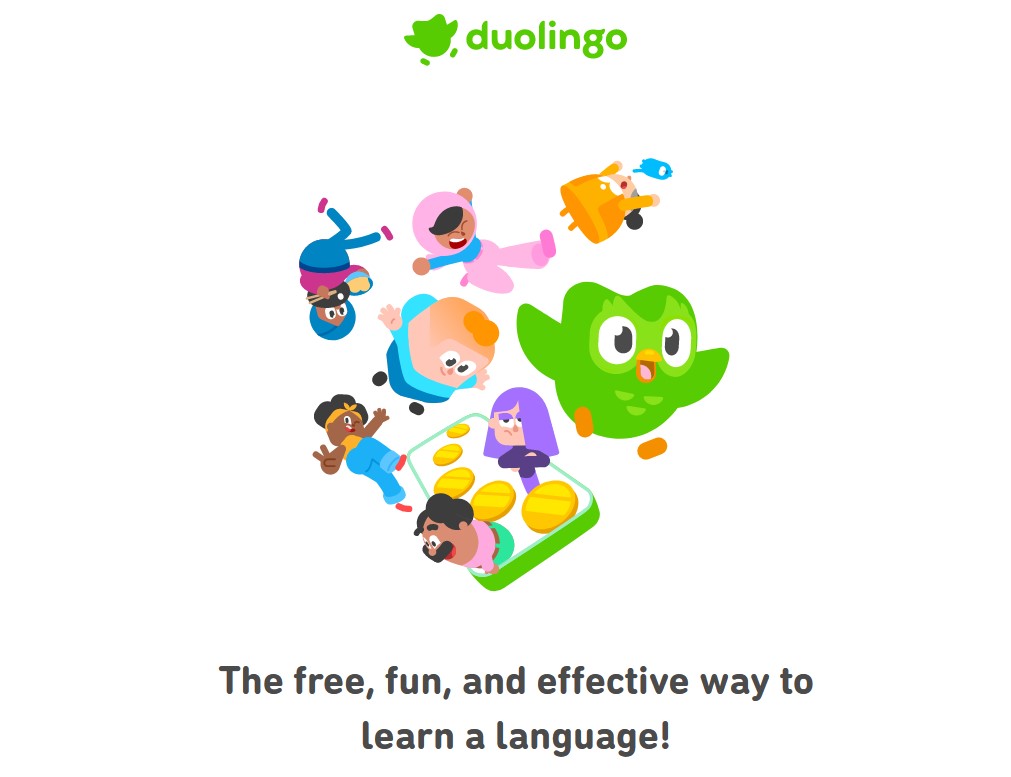
Duolingo provides users with options to learn 35 of the most common languages around the globe, like English, Spanish, German, and more. The platform first asks you your expertise level in a language; beginner or advanced. The beginner course starts instantly, but you have to undergo a test to activate the advanced language learning course.
Duolingo is completely free with no locked features so that everyone can enjoy the platform, but it comes with ads on its free version. You can permanently remove the ads by paying for their premium membership. There are podcasts provided so that users are able to polish their language skills.
Duolingo Pros
Fun learning experience using gamification strategies.
Accessible on iOS, Android, and the web.
Short lessons for the duration of 5 to 10 minutes.
Duolingo Cons
Reading and writing are the main focus.
Grammar lessons are limited, and the vocabulary is too extensive.
Duolingo Pricing
Duolingo is free, but it comes with ads and limited features. Superlingo is ad-free and comes with a 2-week free trial.
- Super plan — 2 weeks free, then from $7 per month.
- Super Family — 2 weeks free, then from $10 per month.
Pimsleur
Best for Improving Speaking & Listening
Pimsleur is a platform that allows users to learn linguistics by conversing and performing 30 minutes of language exercises daily. These mini-lectures are accessible via Alexa and set at the user’s own pace. To keep up with the motivation levels, skill badges are provided so that users can practice popular words.

With Pimsleur, you can master up to 51 different languages with a promise to learn a new language within 30 days with a near-native accent. Users are exposed to the language for 30 minutes a day in the form of everyday situations within which they are to interact.
Pimsleur’s thrust is on familiarization with the sounds of a language. Through this sound-based learning, individuals do not have to rely on memorized learning as it is taken up at a more intuitive level.
Pimsleur Pros
Provides a voice coach to test accuracy through Speech Recognition.
Learners can study at their pace and can jump to or go back to lessons.
Has varying methods of learning, from flash cards to quizzes and speed roundups.
Pimsleur Cons
Limited focus on reading.
Solely audio-based, making it difficult for visual learners.
Pimsleur Pricing
Pimsleur provides a 7-day trial after which users are provided a Pay-As-You-Go subscription offer at $14.95 per month.
Babbel
Best for Conversation-Focused Lessons
Babbel provides language learners with 40 hours of live classes ranging from the ‘Newcomer’ level to ‘Advanced’. It is less inclusive in language options as it provides language training in Spanish, German, French, and Italian. These classes feature certified trainers and so provide learners with a classroom environment from the comfort of their home, as they are video classes.

The best part about Babbel is that users are allowed to choose how much time they can commit to their lessons. Based on their learning styles, learners can decide to take lessons from other students or take single lessons as they prefer.
Babbel’s free trial gives you a taste of the course and the application UI but locks the essential features. You need to purchase a paid program to unlock all the lectures and tests on the application.
Babbel Pros
Users are provided an option to practice speaking with Babbel’s certified trainers.
App-based exercises are provided apart from one-to-one or group classes.
For more cultural acclimation, podcasts, and videos are provided.
Babbel Cons
The user interface is difficult to navigate.
Content might not be sufficient for some languages.
Babbel Pricing
Babbel has three pricing plans as follows, each provides access to all the languages it offers.
- 6 months at $13.45 per month.
- 12 months at $8.95 per month.
- Lifetime access at $299 one-time payment.
Busuu
Best to Learn from Native Speakers
Busuu focuses on listening and speaking through its speech recognition tool. It offers language learners 14 different languages to learn from. On completion of a level, a badge for checkpoint completion and stars with a score are provided.
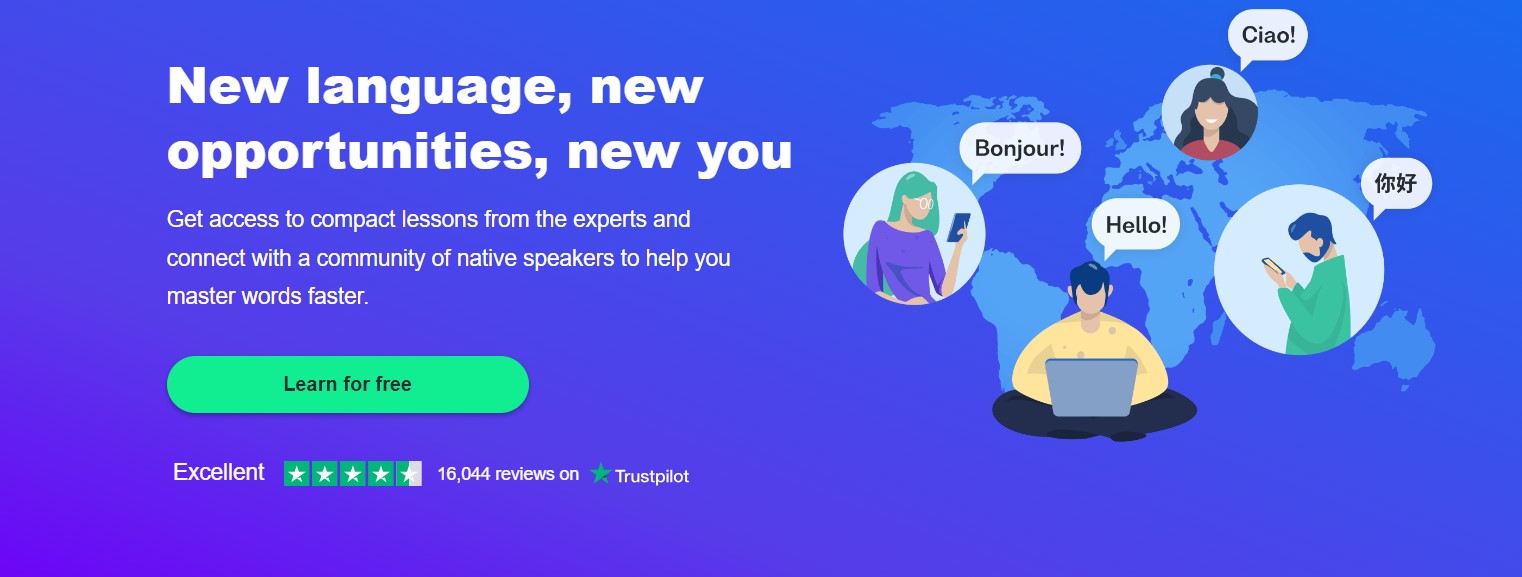
Busuu complies with the Common European Framework of Reference (CEFR) and lets you choose your desired proficiency level accordingly. You can opt for A1 (Beginner), A2 (Elementary), B1 (Intermediate), or B4 (Upper Intermediate).
Busuu provides users with flashcards that help them learn a language for their everyday interactions. The flashcards are interactive, providing a word prompt, voice, and video.
Busuu Pros
Allows personalized language goals.
Provides AI-based reviews of grammar.
Certification is given to users.
Busuu Cons
Offers limited language selection.
The content is less entertaining than most platforms.
Busuu Pricing
Busuu has 3 pricing plans with a 14-day money-back guarantee.
- 1 month at $13.90 per month.
- 6 months at $8.45 per month.
- 12 months at $6.95 per month.
Rosetta Stone
Best for School and Individual
Rosetta Stone allows learners to learn 25 languages. Users are provided with deductive reasoning-based problems across Rosetta Stone that help enhance their speaking, listening, and reading skills.

The Rosetta Stone UI is reasonably straightforward, making it easy to use for a tech novice. From the settings section, you can easily toggle the microphone, speech, pronunciation, and other settings. The dashboard on this platform includes the languages you are learning, their progress, and the lessons in the curriculum. You can skip or redo a lesson according to your preference.
The Rosetta Stone provides users with lectures, live lessons, private sessions, and webinar-style live instructors for one-to-one learning. Some courses are available as CDs or offline downloads in their paid plan.
Rosetta Stone Pros
25-minute live sessions with tutors.
Content created by professional linguistics.
Provides speech recognition technology.
Rosetta Stone Cons
Does not provide any certification or learning credits.
Lesson reminders are not provided.
Rosetta Stone Pricing
Rosetta Stone has three subscription plans for individuals, while for the enterprise version, one needs to contact their sales team.
- 3 months for a single language at $15.99 per month.
- 12 months for a single language at $13.99 per month.
- Lifetime subscription for unlimited languages at $399 one-time payment.
Fluent in 3 Months
Best for Rapid Fluency Goals
Fluent in three months is for learners who prefer the conventional way of learning. The platform teaches a new language through recorded lectures in its three-month-long course, with the thrust being on communication.
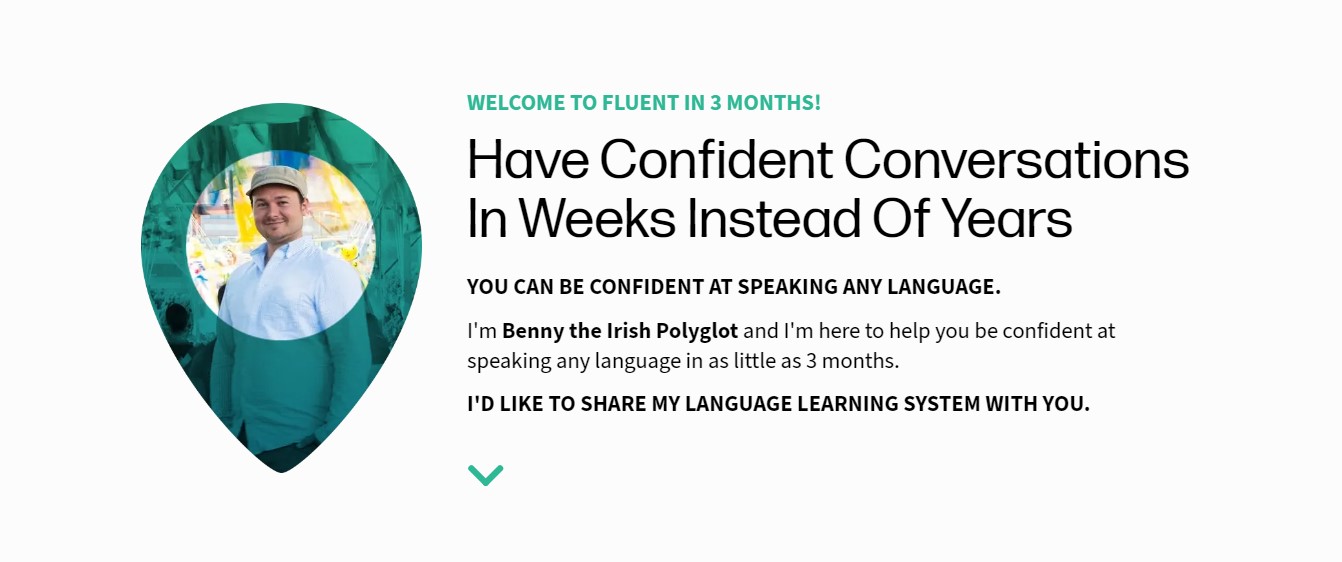
The course contains ten modules with recorded lectures from the language experts at Fluent in 3 Months. One of its best aspects is its ‘Conversation Connectors, ‘ which are effective for immediate conversation.
Fluent in 3 Months wants the learner to enjoy the process of learning a new language through motivation and daily engagement with the language. Through such daily practice, a user would be able to naturally pick up a language without having to learn it the old-school way.
Fluent in 3 Months Pros
Learning the American Sign Language is made possible.
Provides a lot of language hacks and tips.
Has a collection of resources for users.
Fluent in 3 Months Cons
There is no set learning structure.
Does not have grammar or vocabulary lessons provided.
Fluent in 3 Months Pricing
Fluent in 3 Months pricing varies as there are several courses provided to suit users’ needs, from the 60-minute language learner at $47 to the Fluent in 3 Months all-access webinar pass at $299. The Fluent in 3 Months premium versions cost $97 plus tax and is a one-time payment. It provides free email courses and other bonuses.
All Language Resources
Best to Find Language Learning Materials
ALR (All Language Resources) is a collection of resources for all major languages. The website is relatively straightforward, with many language resources and reviews of popular applications to help you find your ideal language solution.

ALR has a YouTube channel that constantly updates you with valuable resources for learning a language. The channel also features tons of in-depth application reviews and comparison videos. You are provided with resources in Mandarin Chinese, Korean, Japanese, Arabic, and many more.
All Language Resources Pros
Provides reviews of language resources.
Has a YouTube channel for users who want to access more content.
All Language Resources Cons
Provides resources for language learning but does not offer a structured course.
The learner needs to decide what resource will benefit them, which is difficult for a beginner.
All Language Resources Pricing
ALR offers language learning discounts for learners who are interested in learning languages on other platforms, such as Rosetta Stone and Pimsleur.
ALR and their curated courses are entirely free, and they earn through their Affiliate program.
Mezzofanti Guild
Best to Learn Arabic and European Languages
The Mezzofanti Guild is a compilation of popular resources you need to learn a new language. You can find resources regarding Arabic, German, Spanish, Japanese, Hindi, and many more. The popular resource compiler platform has featured in BBC, Business Insider, Esquire, and many more prestigious media.

The How-To section of Mezzofanti Guild gets constantly updated with crucial concepts regarding various languages. They also feature several reviews for popular applications like Duolingo, Mondly, Rosetta Stones, and more. You can join their newsletter to stay updated with the how-tos and reviews they post on their platform.
Mezzofanti Guild Pros
Provides reviews so users are better able to choose language applications.
Podcasts are provided for exposure to listening to a langauge.
Mezzofanti Guild Cons
Limited languages.
Diverse collection of resources from tools to blogs and podcasts.
It would be difficult for a new learner to know which resource to start with.
Mezzofanti Guild Pricing
Mezzofanti Guild does not provide a pricing plan, as it provides resources and reviews of other language learning applications.
Learn with Oliver
Best to Learn Chinese and English
Learn with Oliver is a simple platform that features a plethora of resources under one roof. Teaching on Learn with Oliver is done through flashcards that contain images with dialogues, eventually telling you small stories. The conversations get recorded using native speakers so that the accent remains authentic across your learning journey.

Learn with Oliver’s flashcards do not follow a linear learning curve; instead, they seem random at some times. You also get many quizzes and tests that contain fill-in-the-blanks, listening, writing, and MCQ-type questions.
The Learn with Oliver platform is excellent for beginners searching for a tool to learn the basics of a language. You can choose between popular languages like Chinese, Danish, Dutch, French, Russian, and many more. There are different courses for English that are tailor-made for a particular ethnicity; English for Russians, English for Thai, English for French, and more.
Learn with Oliver Pros
Makes learning easier through repetition.
Provides grammar and vocabulary practice.
The free version offers users a gist of what they are getting.
Learn with Oliver Cons
It is not a language course but a tool.
The flashcards do not have pictures.
Learn with Oliver Pricing
Learn with Oliver’s pricing plan features a free version, which is a basic account. Its premium account costs $10 per month and provides customizations like additional notes to flashcards and self added vocabulary words.
Loecsen
Best for Interactive Lessons
Loecsen offers interactive lessons and high-quality audio recordings to teach you new languages. The platform currently features more than 40 languages with a varied curriculum. Loecsen is not the one-stop solution to learning a language entirely; instead, it teaches you useful phrases in daily conversations.
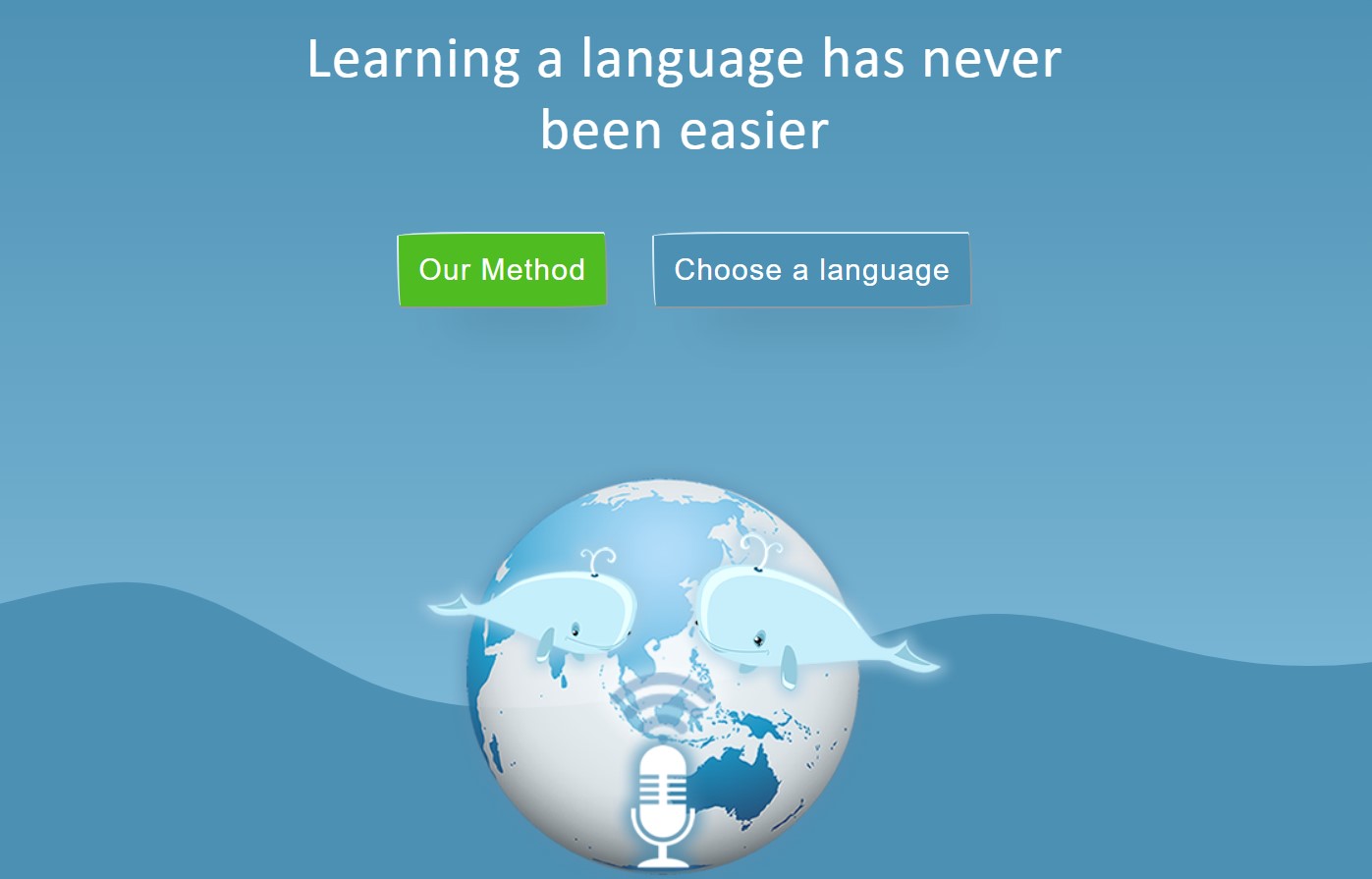
Loecsen is good for you to learn some useful phrases and their pronunciations using native audio. You should consider other options, especially if you want to learn a language deeply.
Loecsen Pros
Helps in improving pronunciation.
Has a user-friendly layout.
There are many languages covered.
Loecsen Cons
Sometimes there might be problems in accessing the website.
Users need to navigate their own learning path.
Loecsen Pricing
Loecsen is free of charge when it comes to pricing.
What are the Benefits of Multilingualism?
There are 3 main benefits of multilingualism, which are as follows:
- Improving Cognitive Function: By speaking multiple languages, cognitive flexibility is improved and so are memory and problem-solving skills. There is mental effort which is required for switching from one language to another, and processing the grammatical structures helps to improve the cognitive function.
- Boosting Memory: Memory function requires the brain to be able to juggle vocabulary and grammar rules, especially the multiple sets that are a part of multiple language learning. Due to the switching between languages, the memory pathways are improved, which in turn improves the recall capacity.
- Enhancing Cultural Understanding: By being able to communicate, there is more cultural and cross-cultural exchange possible. Being better able to understand traditions and customs from first-hand encounters promotes empathy and understanding.
What are the Other Ways to Learn a New Language?
Here are 3 other ways to learn a new language:
- Podcasts: Listening comprehension is essential to become fluent in a language. With everyone being so busy, podcasts are a way to improve listening while multitasking. The “Coffee Break Spanish” podcast is an interesting example, in which listeners are treated to daily lessons on various topics that are short and yet vocabulary-rich.
- Audiobooks: Audiobooks in one’s target language are another way to meet your reading goals while improving listening and vocabulary. If you feel you aren’t up to doing an entirely new book, you could pick one you have already read or a simple children’s classic like “The Little Prince” by the writer Antoine de Saint-Exupéry.
- Watching regional movies: Movies and regional web series are another way to enjoy learning a new language through entertainment. Viewers watching dubbed or sub-titled shows get to experience pronunciation and natural speech patterns. Through a dubbed performance, you get a gist of what is going on while familiarizing yourself with the language. For example, if you are keen to learn German, you could watch “Schindler’s List” with subtitles in German.
More Resources for Learning
-
 EditorJoy R Bhamre is an Editor at Geekflare who brings to the table a unique blend of language and technical expertise. Being an English Literature Honors Gold Medalist, Cambridge-certified Business English Communications Trainer, and the author of ‘Apocalypse’ she knows the value each word brings to a piece. This with her 15-odd years of corporate experience ranging from copywriting to academic publications, accounting, pharmaceuticals, technology, and finance is what set her apart as a language artist building brands through words.
EditorJoy R Bhamre is an Editor at Geekflare who brings to the table a unique blend of language and technical expertise. Being an English Literature Honors Gold Medalist, Cambridge-certified Business English Communications Trainer, and the author of ‘Apocalypse’ she knows the value each word brings to a piece. This with her 15-odd years of corporate experience ranging from copywriting to academic publications, accounting, pharmaceuticals, technology, and finance is what set her apart as a language artist building brands through words.
As a Google-certified Digital Marketing Specialist, Joy enjoys crafting content to suit reader engagement and semantic writing principles. When she’s not glued to her laptop, you’ll find her working towards breaking her next running personal record or in a meditative mood contemplating whether the pen/keyboard is mightier than AI (hint: there still needs to be a brain behind the prompt!). 😉
Education: English Literature Hons, The Maharaja Sayajirao University
Expertise: Digital Marketing Strategy, Privacy, Crypto, B2B and B2C Technology Solutions


